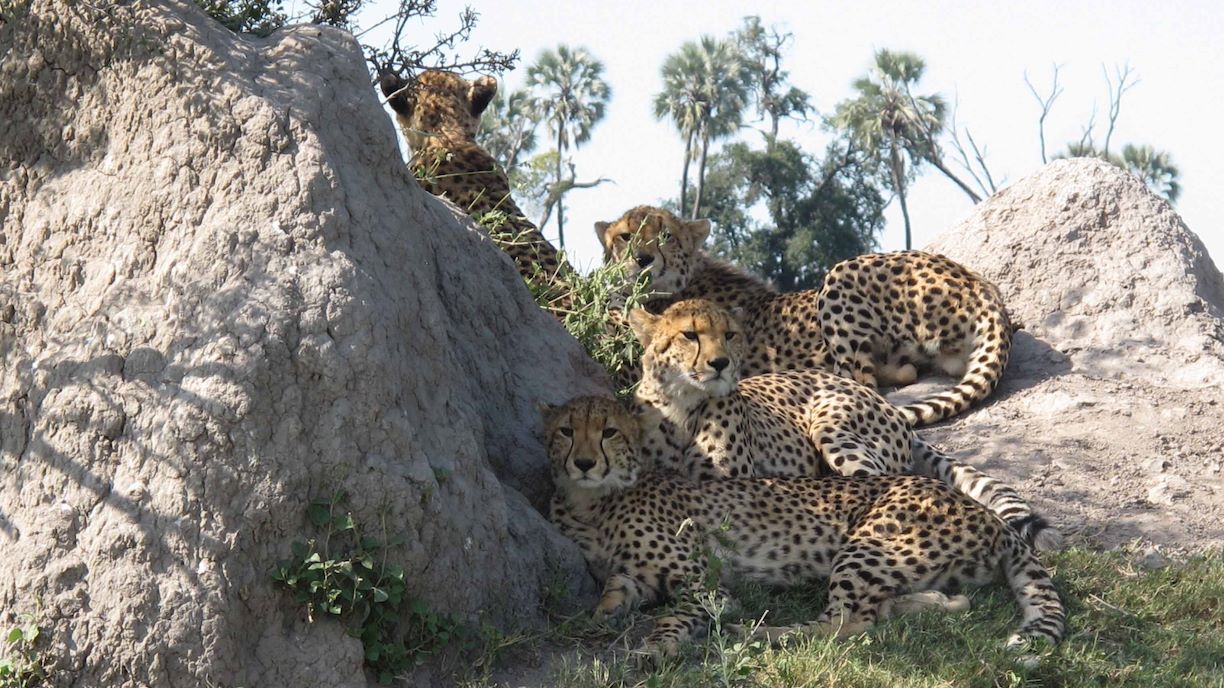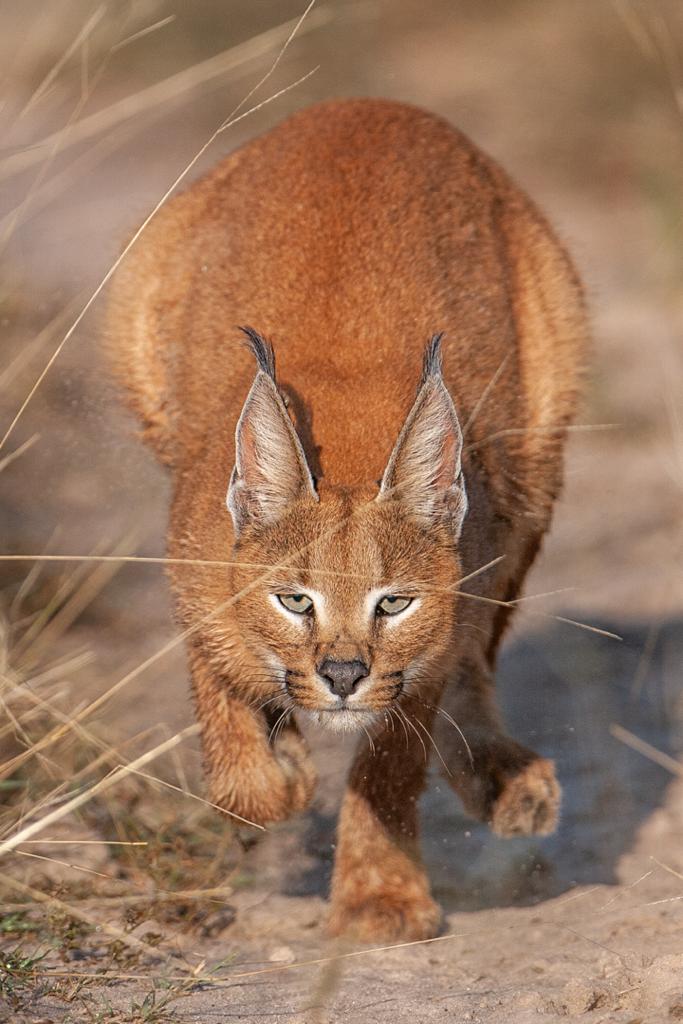In March and April, our guests had frequent sightings of a female cheetah with her six cubs that are around eight months old. It has been fascinating to watch her raise her cubs. She simultaneously hunted for food, taught her cubs how to hunt and protected them from any potential danger. While the energetic cubs very often were preoccupied with their playful bonding activities and sibling affection, they also learned that their playground is a hunting ground for their natural enemies.
On one occasion, two worrying incidents unfolded. A large male leopard suddenly appeared walking towards them without fear, which forced their mother to risk her own life to protect her family. Although she knew very well that she was not strong enough to subdue a full-grown male leopard, she still took the initiative and seemed to welcome the challenge. We watched her as she quickly and decisively positioned herself between the potential danger and her cubs, persistently intimidating and driving off the leopard to ensure their safety. Each time the leopard moved closer she charged at him to keep him at bay. For her to hunt being flanked by other predators is a challenge, and not only to hunt, but to keep her kills. The environment they are growing in requires a skilled and brave mother to raise her cubs to independence, and so far she has done well.
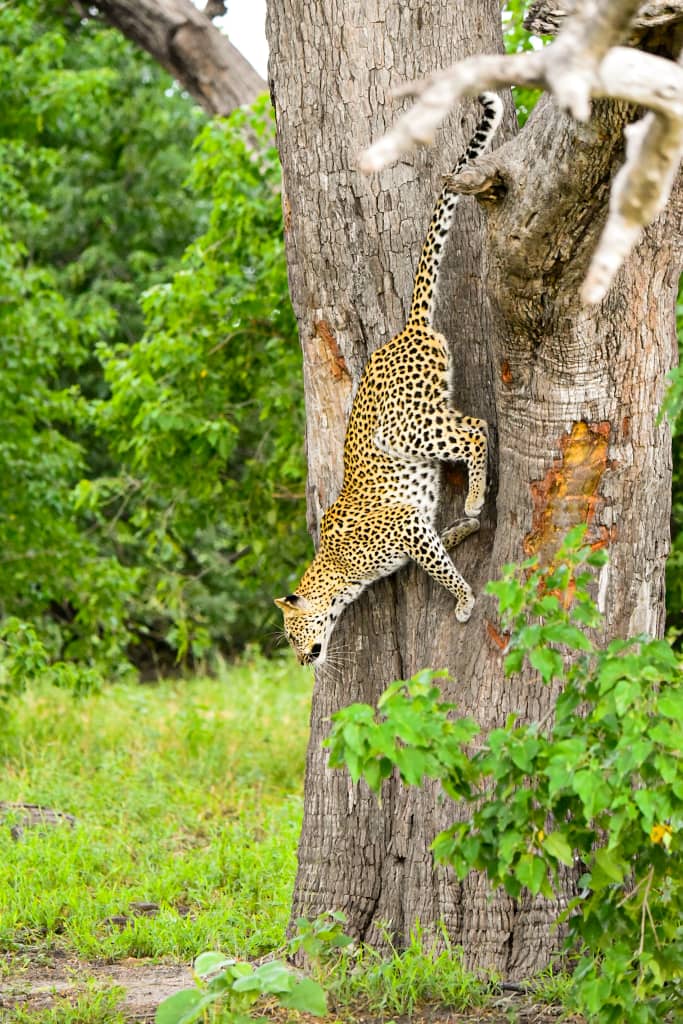
After fleeing to safety away from the bold male leopard, she continued with her hunting mission, following a herd of impalas that were unaware of her presence. She singled out her target and took off for a successful kill. But little did she know that she had unwanted company and she would be dealing with another ordeal on this day. This time it was a large female hyena. She knows her enemies very well, who to confront and who to be submissive to. Her kill was quickly taken away by the hyena before she had even tasted it.
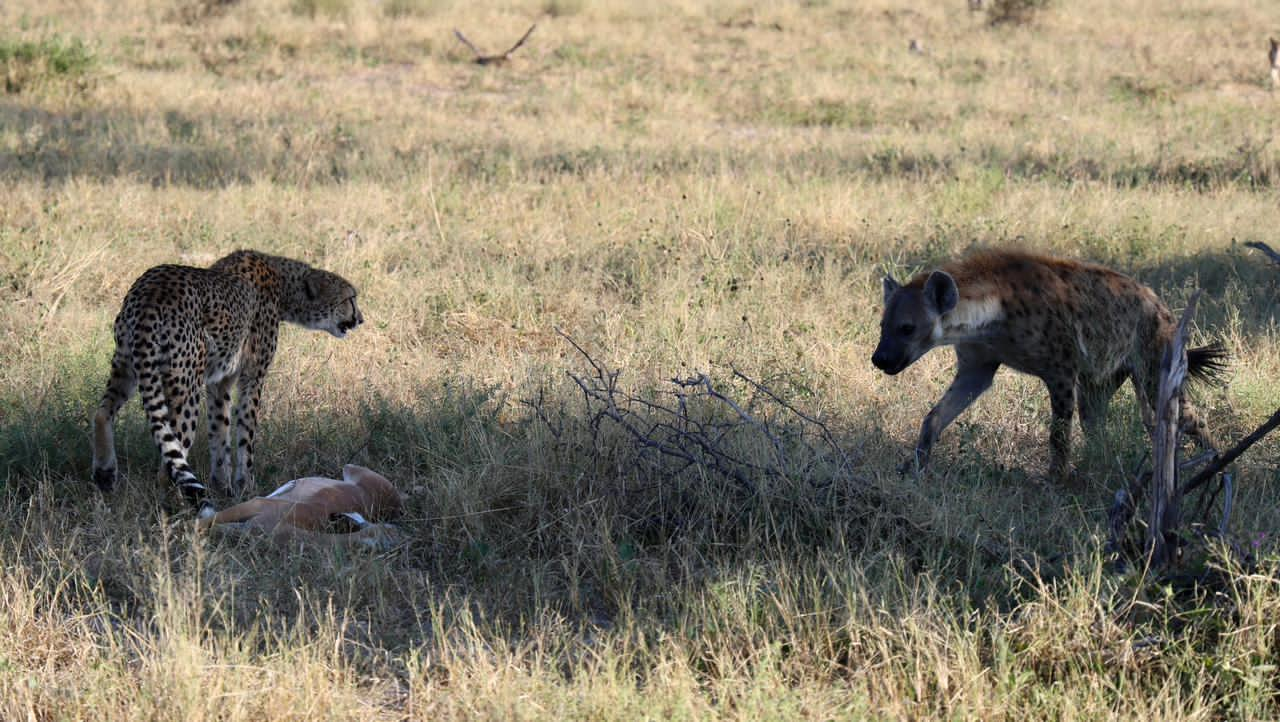
Just as we were complaining about the hyena’s actions, another male leopard appeared, having been perfectly concealed while waiting for the hyena to blink and lose focus. It didn’t take long, and when the hyena walked just a few feet away to a waterhole, the leopard sped over to the carcass and took it up a tree.
This mother cheetah obviously grew up in this environment and she learned how to survive around her enemies. These are the same skills that she is teaching her offspring, which is fascinating for us to observe.
There have also been regular and magical sightings of another female cheetah with three juveniles, as well as a female cheetah with two juveniles; recently we also found a female that is heavily pregnant.
Leopard sightings were consistent, and we regularly viewed some that we are familiar with, as well as some new faces. We realised there is an increasing number of impressive new full-grown males in our reserve, which may change the leopard dynamics in future. Some might share the territory but not their space.
The female leopard with the little cub was also sighted often with her playful youngster. She has really been impressing us with her remarkable hunting abilities, and we watched her hunting successfully several times. Her two sub-adult offspring that she weaned some time ago have also been concentrating their activities around her territory; she is aware of their presence and they have been seen in the vicinity of each other. She has had a few altercations with them, as she is very careful about being in the same space with them now that she is lactating a young cub.
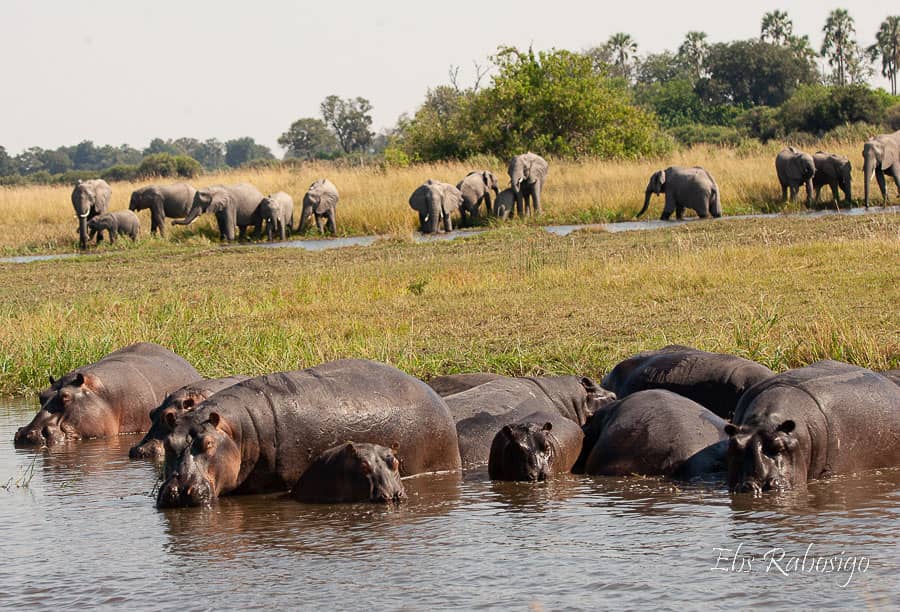
Large herds of buffalo are frequenting the reserve along Gomoti River. Recently we had a herd of at least 200 buffalo that were in the proximity of the camp for three consecutive days. The Tsame Pride has not seen the buffalos for a long time and the arrival of this large herd in their territory drew their attention and also excited them.
We watched as the lionesses and their cubs were preoccupied with their social life, but stopped immediately in response to the buffalos. Initially they hesitated to attack the buffalos that seemed unperturbed by the lions’ presence. Finally one sub-adult lioness became brave and penetrated the buffalos’ defences and launched an attack. It was an incredible moment to watch this inexperienced young lioness taking the initiative to attack one of the most fearsome animals in the bush. Her effort inspired the other adult lionesses and they all became active and helped. Since there was no shortage of help, the buffalos stampeded away and trampled a calf which became an easy pick for the lions.
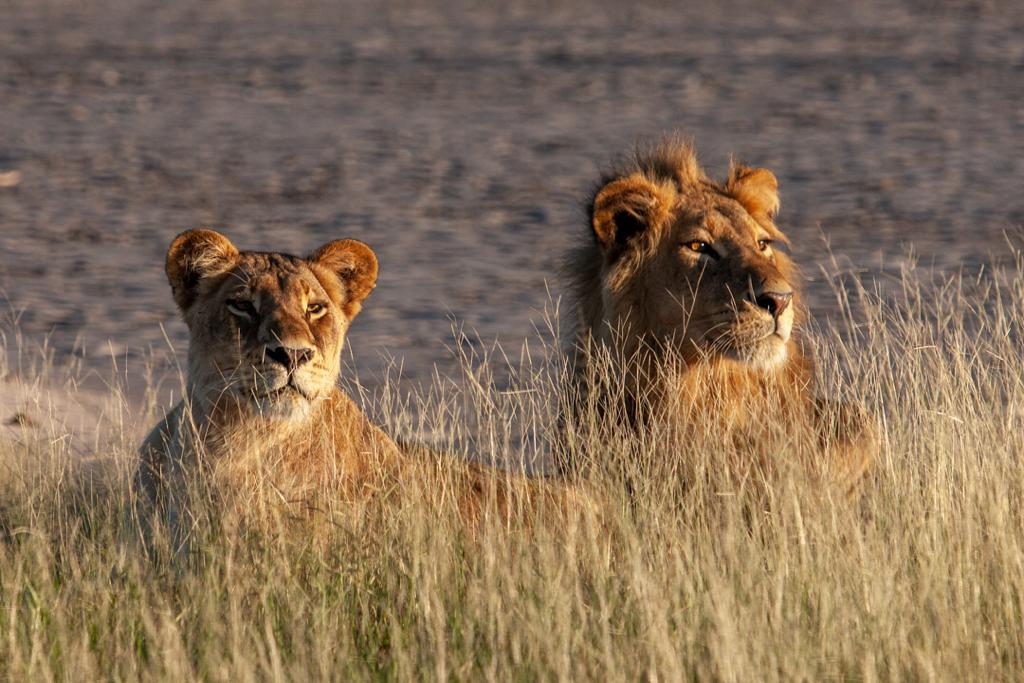
The Tsame Pride was otherwise very active this month, hunting giraffes, impalas, zebras and buffalos. We had some exceptional encounters with them, one of the most fascinating spectacles being the take-down of a giraffe. The lions weren’t expecting their luck to be short-lived though, as the giraffe eventually overpowered them and narrowly escaped death with some severe external wounds. The collective strength of all the sub-adults lions involved wasn’t enough to complete the mission, which led to the giraffe regaining her strength and battling them to the point of escaping. That day wasn’t the lion’s to feed, but the giraffe’s to live. The lions caught up with the same wounded giraffe after a day, and this time the giraffe was too sick and had no strength to fight back nor run, and became an easy meal for the lions.
After a long period of the two dominant males spending time out of our prime game drive area, they are back again, and their reverberating roars are filling the night air for a reason. One of the lionesses has been spotted near camp with four little cubs sired by the males. She had hidden them around the camp area for two days before moving them away to an unknown location. The cubs are still young with no ability to travel long distances, so she keeps moving them around to different hiding spots when she goes to join others on a kill, or before she set off to hunt within the area. With quite a few nomadic young males roaming the area recently, these dominant males fear for their little cubs, and so have been on guard to ensure their safety.
We also watched the four young males – that had departed from the territory as they became independent – came into violent contact with the three young males from the Tsame Pride. A brutal confrontation between the males had been brewing for four days, as the intruders loitered in an area they were fully aware was already occupied. On the fifth day they collided with the Tsame males, and a fierce battle for this prime territory began. With the help of the six females from the pride, the four were defeated and driven out of the area.
